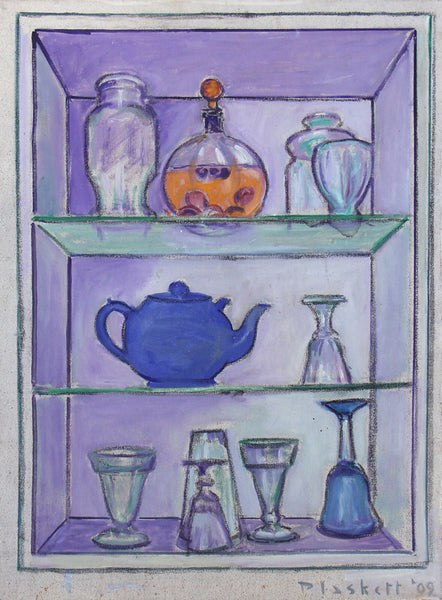ARTIST Q&A: BAU-XI GALLERY ARTISTS ON A DEEPER SHADE OF BLUE
It’s the subtleties of blue that entrance me - the evocative, inky blues of velvet, the delicate, thin veils of the sky, or the layered ruffles of a rumbling lake. I’ve always been drawn to water (my studio is on a lake) and the intricacies of blue are cool and contemplative to me.
Wassily Kandinsky wrote of the colour blue in his book Concerning the Spiritual in Art: “The deeper blue becomes, the more urgently it summons man towards the infinite…” Yves Klein, expressing a like-minded sentiment, once stated "Blue is the invisible becoming visible. Blue has no dimensions, it is beyond the dimensions of which other colours partake". When called to speak on the famed pigment which bears his name, Klein would often borrow the words of French philosopher Gaston Bachelard: “First there is nothing, then there is a deep nothing, then there is a blue depth."
Blue has far surpassed the rest of the chromatic spectrum in its saturation of the collective consciousness, bleeding swathes of blue into the vernacular. The colour occupies a liminal space, both material and intangible, it is at once the hue closest to both light and dark. For the Summer Group Exhibition A Deeper Shade of Blue, on view until July 28th, Bau-Xi Gallery has invited gallery artists to participate in a dialogue engaging with the rich art and cultural history of the colour blue and to provide insights on their own personal relationship with the hue and its place in their individual practices.
The colour blue for me has always been a symbol of eternity, of an endless sky and a timeless ocean. I have always been drawn to its beautiful calm and provocative mystery. Blue evokes so many emotions and states of experience.


“Blue is the colour of infinity. Of cloudless skies and deep calm seas. It has no dimensions. Blue is the space between breaths.” – Vicki Smith

“Recently, the colour blue has represented to me the deepest part of the lake and the things moving below the surface that you can't see.” - Mel Gausden

“L’Heure Bleue - the twenty minutes or so before the sun comes up or after it goes down - is one of my favourite times of day. The beauty of the indirect light during those brief periods is as mysterious and evocative as the colour blue itself and can make the ordinary appear extraordinary.” – Jamie Evrard
















































